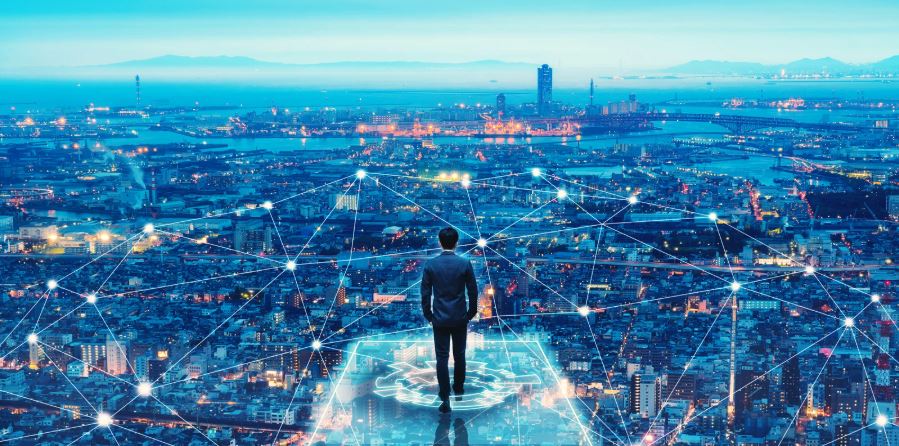
The cybersecurity landscape has always been rapidly evolving, each year introducing new threats and opportunities that require businesses to stay ahead of the curve. As we enter 2025, your business must adapt to an increasingly complex environment to safeguard their assets while also striving for innovation and growth. In this article, we will examine some of the most interesting emerging trends that are poised to shape cybersecurity in the coming year – while offering insights into how businesses like yours can stay prepared.
AI-Driven Cyber Threats
Artificial intelligence is transforming the world, especially regarding cybersecurity – for both attackers and defenders. Cybercriminals are leveraging AI to create highly sophisticated phishing campaigns, utilizing techniques like social engineering and deepfake attacks to trick users. With generative AI (Gen AI), attackers can rapidly create convincing phishing emails, fake video messages, and other fabricated content. These have the potential to bypass traditional security measures by adapting in real-time to exploit vulnerabilities.
On the defensive side, AI offers useful tools for cyber defense for businesses of all sizes. Machine learning algorithms can now detect and respond to threats in real time, minimizing the need for human intervention and reducing response times. Predictive analytics powered by artificial intelligence enables businesses to manage risks proactively and resolve incidents faster. However, the growing reliance on AI also raises concerns about privacy and misuse, making ethical artificial intelligence governance and compliance frameworks essential components of modern cybersecurity strategies.
The Role of Zero Trust Architectures
As hybrid and remote workforces are still very common, zero trust architectures are emerging as the standard for ensuring the security of modern IT environments. These models require continuous authentication for access, meaning that every time you log in, you need to verify a code. Multifactor authentication (MFA) plays a pivotal role in this framework, ensuring that every login attempt undergoes this strict verification. Most of the time, MFA can be set up with a simple phone app, or a text sent directly to your device.
Zero trust strategies have also been seen to drive more investment in identity and access management (IAM), endpoint security, and advanced monitoring tools. This approach is particularly beneficial for securing cloud hosting environments, where credential-based attacks remain a very real threat. For businesses navigating the complexities of hybrid operations, adopting zero trust is no longer optional…it is an essential.
Evolving Ransomware Threats
Ransomware continues to rank among the most disruptive cybersecurity threats, with attackers increasingly targeting cloud environments, third-party vendors, and supply chains. These attacks are growing in sophistication, and will continue to grow in 2025, requiring businesses to implement robust prevention and response strategies.
Incident response planning and comprehensive backup management are essential strategies for minimizing the impact of ransomware. Additionally, regulatory scrutiny of ransomware response protocols is expected to intensify in 2025, making it vital for organizations to establish and maintain strong defenses. Partnering with managed service providers can ensure these measures are both effective and compliant with emerging requirements.
Supply Chain and Third-Party Risks
The hyper-connective nature of modern businesses has made supply chains and third-party vendors prime targets for cybercriminals. Attacks on these external partners can expose vulnerabilities that ripple across entire organizations. These ripples can end up being incredibly expensive.
In response, businesses are adopting vendor management frameworks and conducting thorough third-party risk assessments to mitigate these threats. Proper security protocols for external suppliers and partners are no longer optional; they are essential for protecting sensitive data. Collaboration among businesses, vendors, and government entities will play a critical role in addressing these growing risks.
Navigating the 2025 Cybersecurity Landscape
As cybersecurity threats grow more sophisticated, businesses must embrace proactive strategies to protect their systems and data. Investing in advanced tools, fostering a culture of cybersecurity awareness, and collaborating with trusted managed service providers are key steps toward staying secure.
Contact the Experts Today
At SWK, we understand the challenges of the ever-changing cybersecurity landscape with our team of industry experts. From zero trust architectures to cloud hosting security and beyond, our cybersecurity services can help you prepare for tomorrow’s challenges today. Contact us today and ensure your organization is equipped to face the cybersecurity demands of 2025 and beyond.
